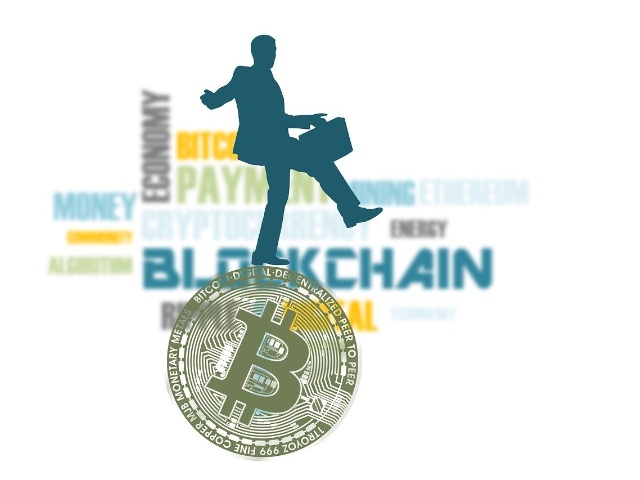Sinds een aantal maanden worden er in de blogosphere steeds meer artikelen gepubliceerd over biflatie. Het ging eerst voornamelijk over het inflatie/deflatie debat, maar aangezien de grootste beleggers en centrale banken ter wereld ook niet precies weten wat komen gaat, was het zeer moeilijk om tot een consensus te komen. Pimco, een grote obligatiebelegger in de VS, heeft het afgelopen jaar maar moeite gehad met de voorspellingen. Inflatie, disinflatie, deflatie? Eerst deflatie en daardoor hyperinflatie? En ook de Federal Reserve is niet helemaal duidelijk. Zal Ben Bernanke nu met een tweede ronde stimuleringsmaatregelen komen om de deflatie te beteugelen, of toch niet? Niemand weet het precies, maar weinigen kijken naar de derde mogelijk: Biflatie.
Via SeekingAlpha.com, kwam ik terecht op de website van Balance Junkie. Daar stond een artikel met de naam ‘Are you ready for Biflation? Het stuk begint met de volgende quote:
There’s an alternative. There’s always a third way, and it’s not a combination of the other two ways. It’s a different way.
-David Carradine-
When I last wrote about inflation vs. deflation, I was trying to figure out which one would prevail and how best to position our money. At the time, I felt like we would likely see deflation first, with a bout of inflation down the road at some point. We could even see hyperinflation if global central banks devalue their fiat currencies in a race to the bottom. A couple of wise readers (Kevin from Invest It Wisely and Kevin from Out of Your Rut) pointed out that we are actually experiencing both inflation and deflation, but in different sectors of the economy.
Sure enough, the U.S. CPI (Consumer Price Index) data released on Friday showed more signs that both inflationary and deflationary forces are active in the economy. Headline CPI came in at 0.3%, unchanged from the previous reading. Core CPI (excluding food and energy) came in at 0.0%. So you can see that most of the inflationary impact seems to be emanating from the food and energy arena while overall inflation is virtually non-existent.
I read one article that painted these numbers as positive, since inflation seems well-contained. A look below the surface, however, shows that we may actually be experiencing inflation in some sectors and deflation in others. That’s not so positive. Is it really possible to have both inflation and deflation at the same time?
What is Biflation?
The term biflation is relatively new, having been introduced by an analyst named F. Osborne Brown in 2003. Like most new concepts, there is still a lot of debate over its exact definition and parameters. Simply stated, biflation is an economic environment in which inflation of commodity-based assets occurs simultaneously with deflation in debt-based assets. I’ve heard a lot of people describe it as inflation in the things we need and deflation in the things we want, or inflation in services with deflation in durables. Indeed, the following chart shows that this phenomenon has actually been present for well over a decade:
Let’s take a look at some of the places we’re more likely to find each type of flation.

Inflation
What types of assets will generally see inflation in a biflationary scenario? Not all of these are written in stone, but I’ve seen arguments for price appreciation in the following:
- Precious Metals: Of course, gold, silver, and lesser known metals like platinum and palladium are expected to increase in value as global central banks try to devalue their fiat currencies to fight debt deflation. As people lose confidence in paper money, they turn to other stores of value instead.
- Raw Materials: Inflation in raw materials like copper, iron ore, potash and and oil would likely result from currency debasement coupled with demand from emerging market economies like China, Brazil and India.
- Soft Commodities: Indeed, we have already seen waves of price spikes in rice, wheat, corn, sugar, coffee, cotton and many other commodities as emerging market citizens adopt a higher protein diet and corn-based fuels come into vogue. Ironically, it takes a lot more grain to support a meat-based diet than a vegetarian one. Another term that gets tossed around when a couple of these soft commodities spike is agflation. Go ahead and add that one to your flation lexicon, as if you weren’t confused enough already!
- Services: Increasing costs related to the service sector of the economy are evident in the following areas: government, health care, education, financial services, public utilities and many more. (Don’t get me started on my electricity bill!)
So you can see that many of the sectors experiencing inflation are related to the essentials.
Deflation
Massive debt levels for consumers and governments across the globe raise the specter of a debt-induced deflationary spiral. In the biflationary scenario, deflation occurs mainly in assets purchased with debt. Here are some examples:
- Housing & Real Estate: U.S. housing prices have fallen significantly, and many expect further declines over the next few years. Canadian home prices actually rose throughout the financial crisis thanks to rock-bottom interest rates and superior lending and regulatory standards, but they have recently shown signs of cooling as well.
- Stocks: In general, stocks usually fall during periods of deflation. In a biflationary environment, however, you may be able to find some pockets of strength. We’ll delve into that a bit more tomorrow.
- Autos: The value of new and/or used cars can fall as debt-laden consumers hang onto their old cars longer or try to sell the new vehicles they can’t afford to keep.
- Other Durable Goods: Appliances, electronic equipment, home furnishings, business equipment, and recreational goods are some examples of durable goods. We have seen prices in many of these areas fall over the past few years – think televisions and computers.
Stagflation
How is biflation different from stagflation? While biflation refers to an environment in which some prices are increasing and others are decreasing, stagflation refers to a period of more generalized inflation coupled with overall economic weakness. The biflation parameters don’t seem to make any direct calls on economic strength or weakness, but it seems like rising prices in things we need coupled with falling prices in more discretionary items would not be great for economic prosperity.
So it looks like the value of my home could fall faster than the balance on my mortgage, but my grocery and utility bills will continue to climb. Great. Now what? It seems like paying down debt, increasing income and boosting my savings rate are my best bets right now. I would love to buy that big T.V. once the price falls a little more, but I’m all tapped out from my last visit to the grocery store!
Bron: Balance Junkie


